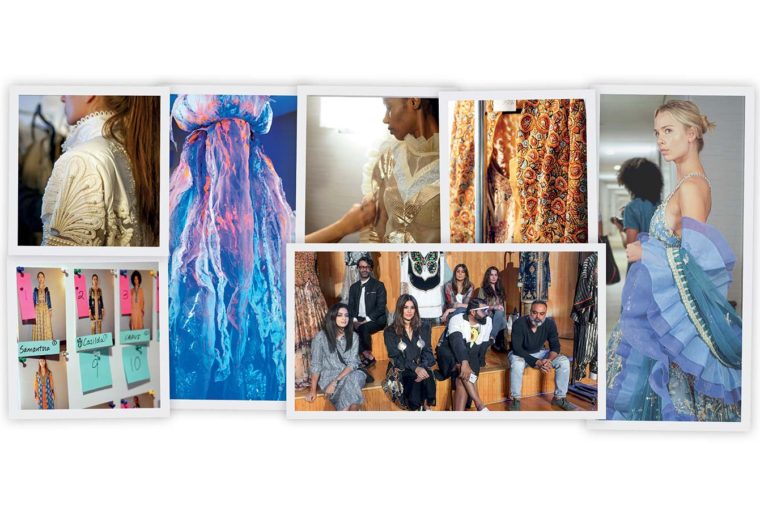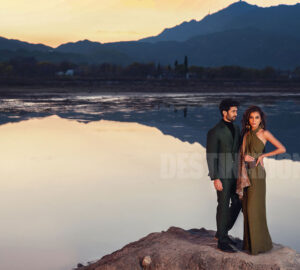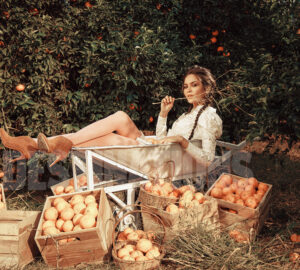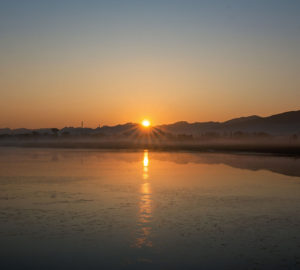After 4 editions in landmark locales in London, Mustang Productions and its founder Saadia Siddiqui took on the Big Apple with the inaugural US edition of Fashion Parade at the iconic Christie’s at Rockefeller Centre. Featuring 4 of Pakistan’s leading designers, Ali Xeeshan, Faiza Samee, Kamiar Rokni and Elan, the show was a grand celebration of South Asian fashion, art and culture.
After 4 editions in landmark locales in London, Mustang Productions and its founder Saadia Siddiqui crossed the pond to hold the inaugural State-side edition of Fashion Parade at Christie’s at Rockefeller Centre in Manhattan. As the market leader in sales of South Asian modern and contemporary art, the prestigious international auction house provided the perfect backdrop for a showcase of six definitive South Asian designers and their latest creations. The house was full, with over 300 movers, shakers and influencers of the international fashion industry in attendance, and the show did not disappoint.
FAIZA SAMEE
Faiza Samee’s collection The Time Capsule, was the ideal opener for the show. A tireless champion of South Asian textiles and craft for over 40 years, Samee’s work has been featured at the Albert and Victoria Museum in London, and she put her best foot forward at Fashion Parade. An antithesis to fast fashion, Samee’s collection displayed the slow and methodical process of her creation. Her pieces were a flurry of hand-loomed silks, block-printed textiles, and velvets painstakingly dyed with indigo, madder root, henna and turmeric. Her passion for South Asian craftsmanship was, literally, woven into every piece of clothing that walked down the runway, for sprigs of flowers, geometric kilims, paisleys and all kinds of South Asian motifs had been lovingly hand embroidered onto the fabrics. Samee classifies herself as a revivalist, and says that her philosophy is one that never sacrifices art and craftsmanship over convenience.
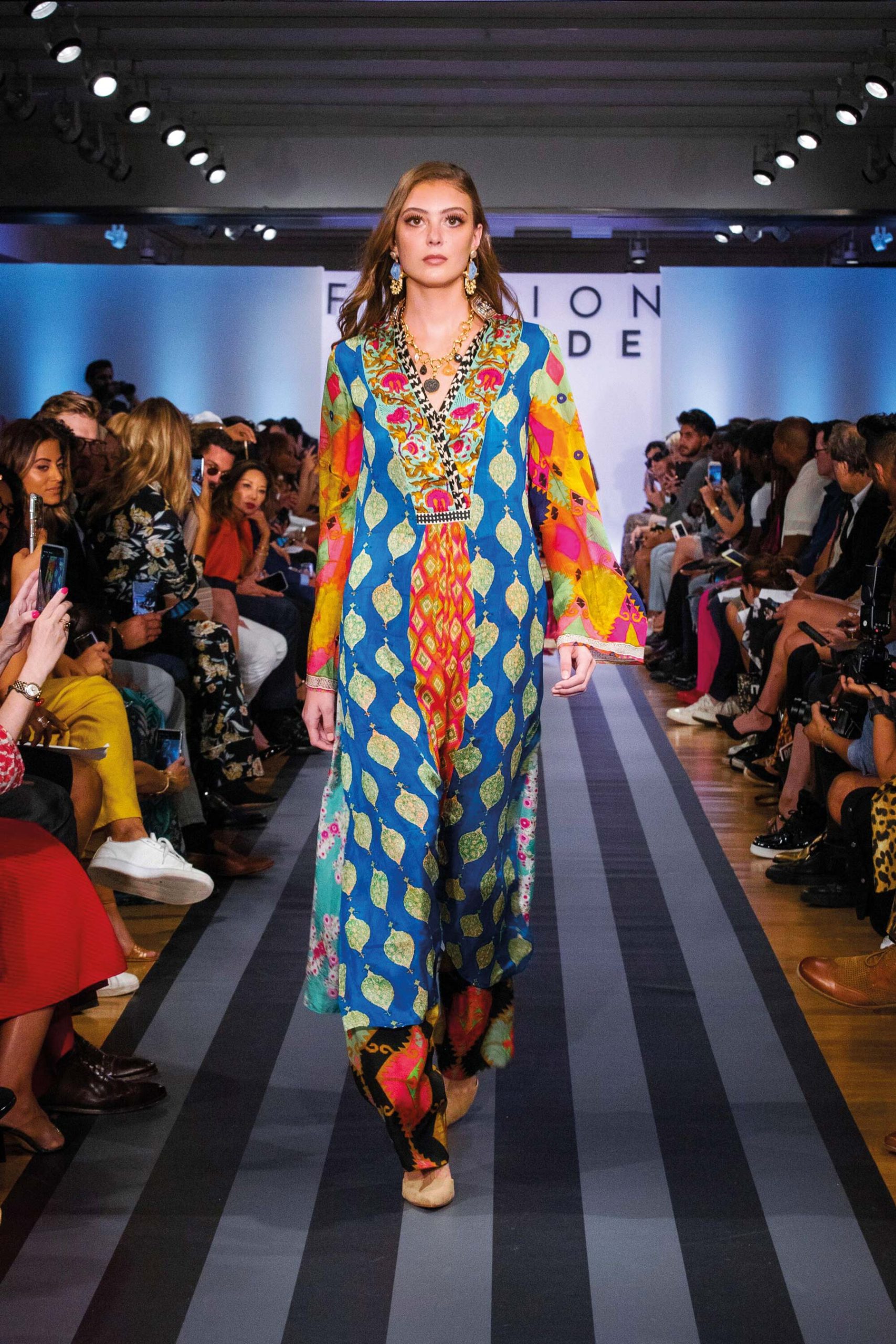

ALI XEESHAN
Before Ali Xeeshan’s pieces were revealed on the runway, all his models walked out wearing hand-painted plastic burkas. His brand, known for making statements of a political and ethical nature, showcased a collection titled Choke, seeking to encourage widespread action against plastic pollution. The designer himself cut a formidable figure, wearing an elaborate headdress of a seagull choking on a bag of plastic. His message was clear – the Earth is choking under the weight of pollution that we inflict so mercilessly upon the environment. His menswear-inspired black and white shirt-dresses were equally impactful. Once the plastic burkas were cast off, one could see the richness of the hand-loomed Egyptian cotton he had used for this collection. The pieces were chic, wearable and a beautiful homage to the Subcontinent, making use of quintessentially South Asian emblems like elephants, parrots, and the gumbads (domes) of Mughal architecture. Sheer panels, fringe and strands of pearls were seamlessly integrated alongside South Asian craftsmanship, and the audience definitely got the message: Life in plastic is not fantastic.
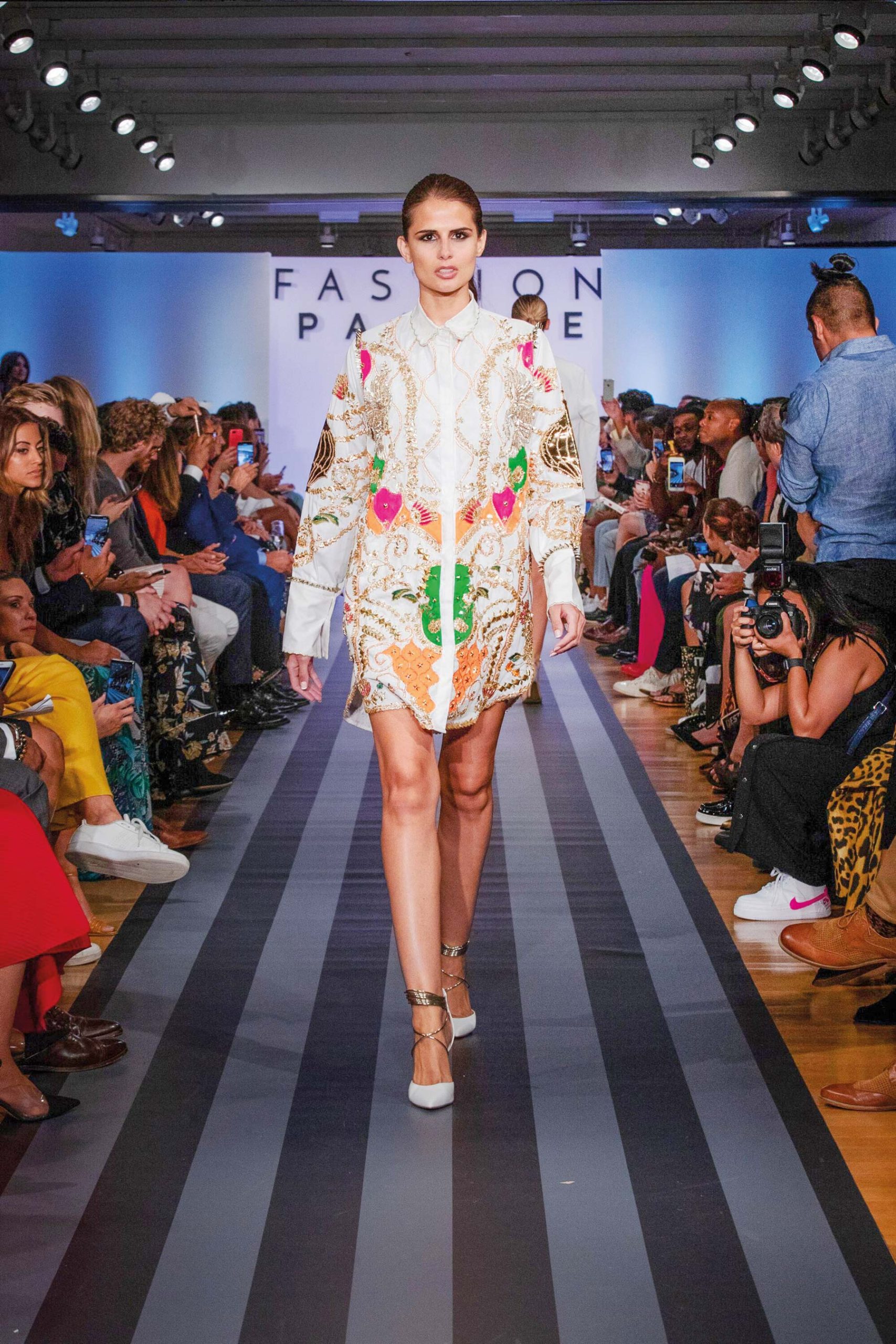
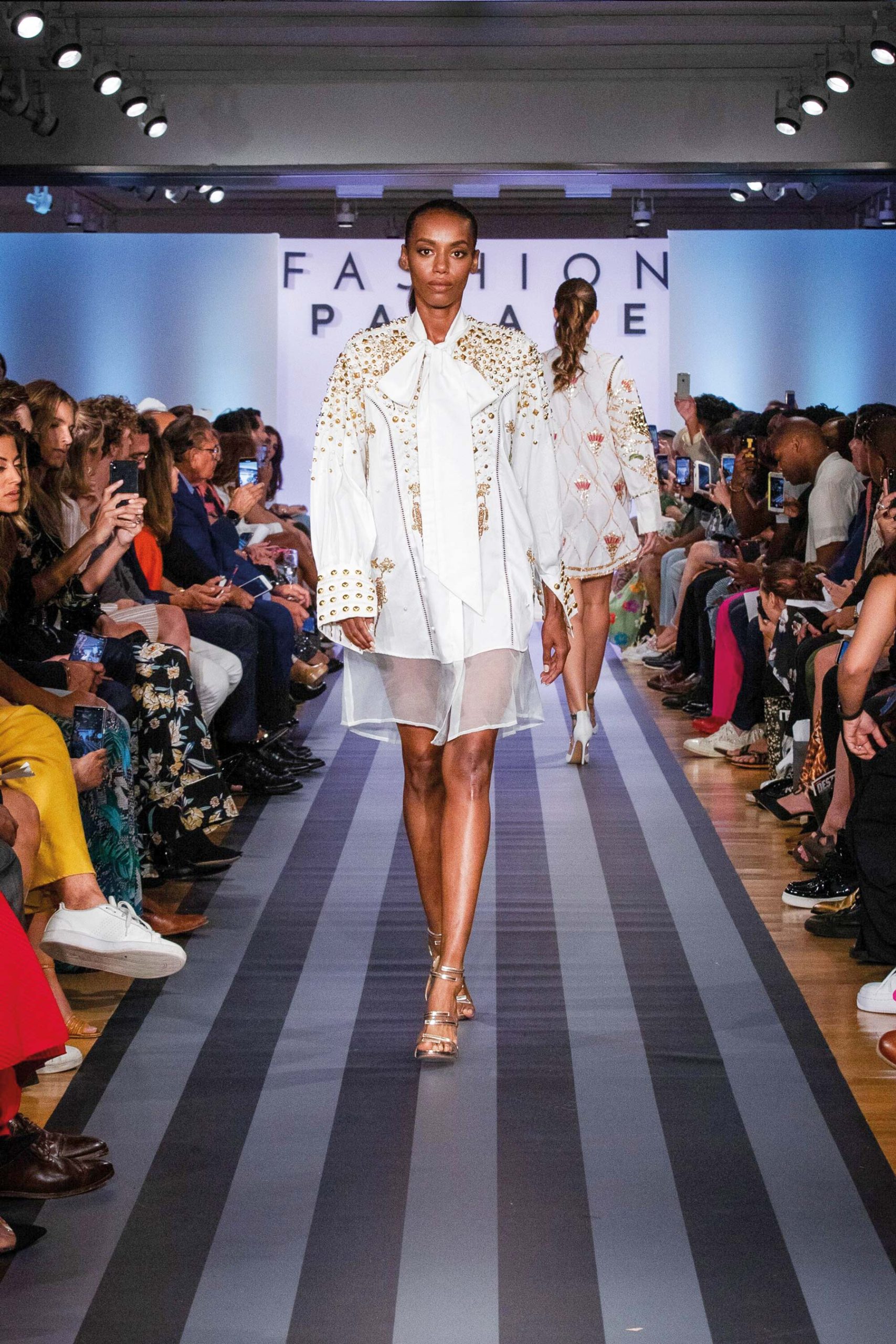
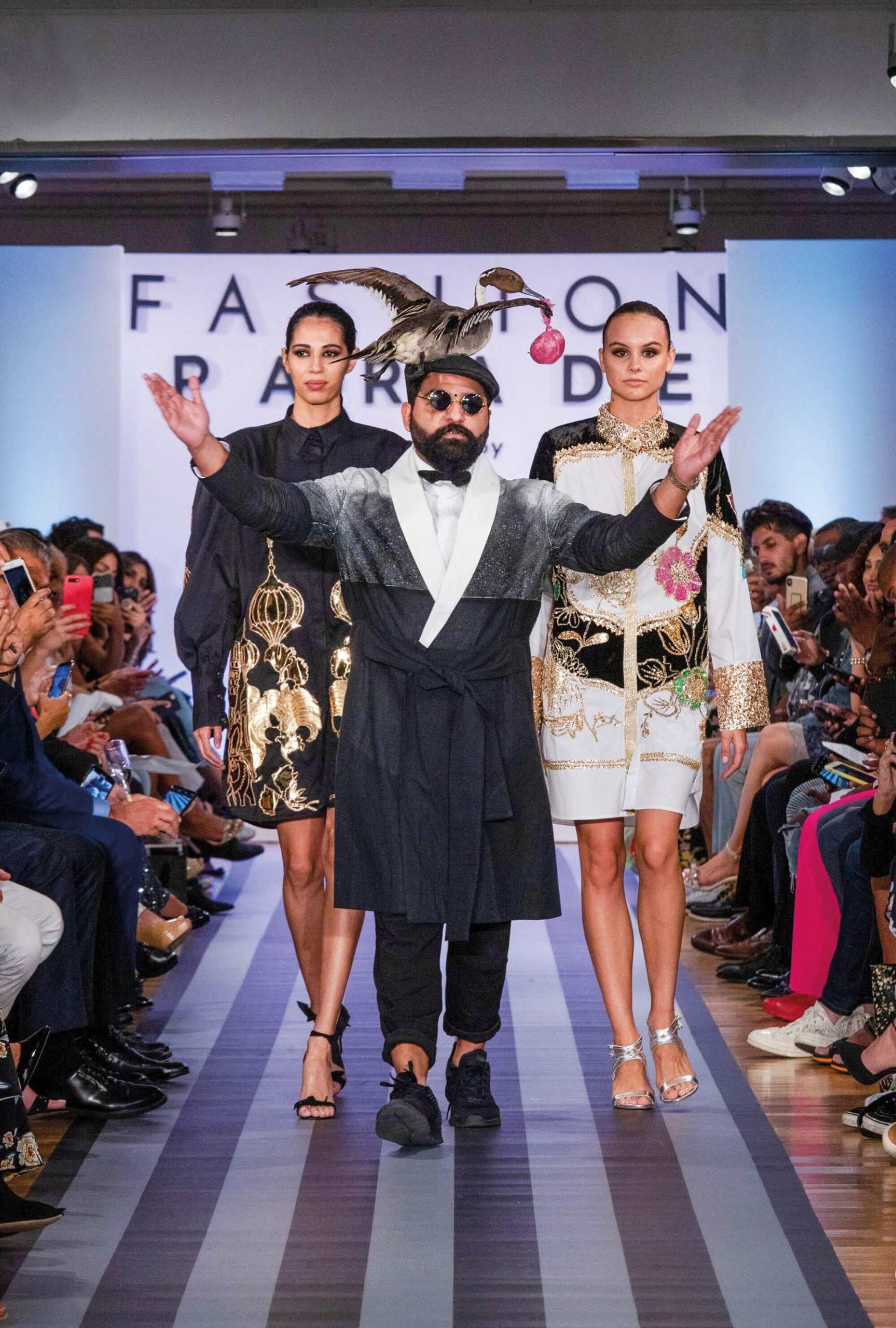
ELAN
Élan showcased Le Doux Poison, a capsule collection crafted from tulle, organza and silks, which is a part of their winter bridal collection for 2019. In the words of Creative Director Khadijah Shah, the collection is “quintessentially Élan” and married Western couture with its pastel colour palette and techniques like pleats and ruffles, with Eastern craftsmanship. The crystals and luxurious bead work that are now synonymous with Élan twinkled on the ramp, with the audience in awe of the sheer opulence of the collection as each ethereal piece sashayed down the runway. There were many standout separates in the showcase, such as a blush pink crop-top with voluminous organza sleeves, paired with a silk pleated ball gown skirt, which could easily translate as black-tie separates fitting for Western sensibilities.
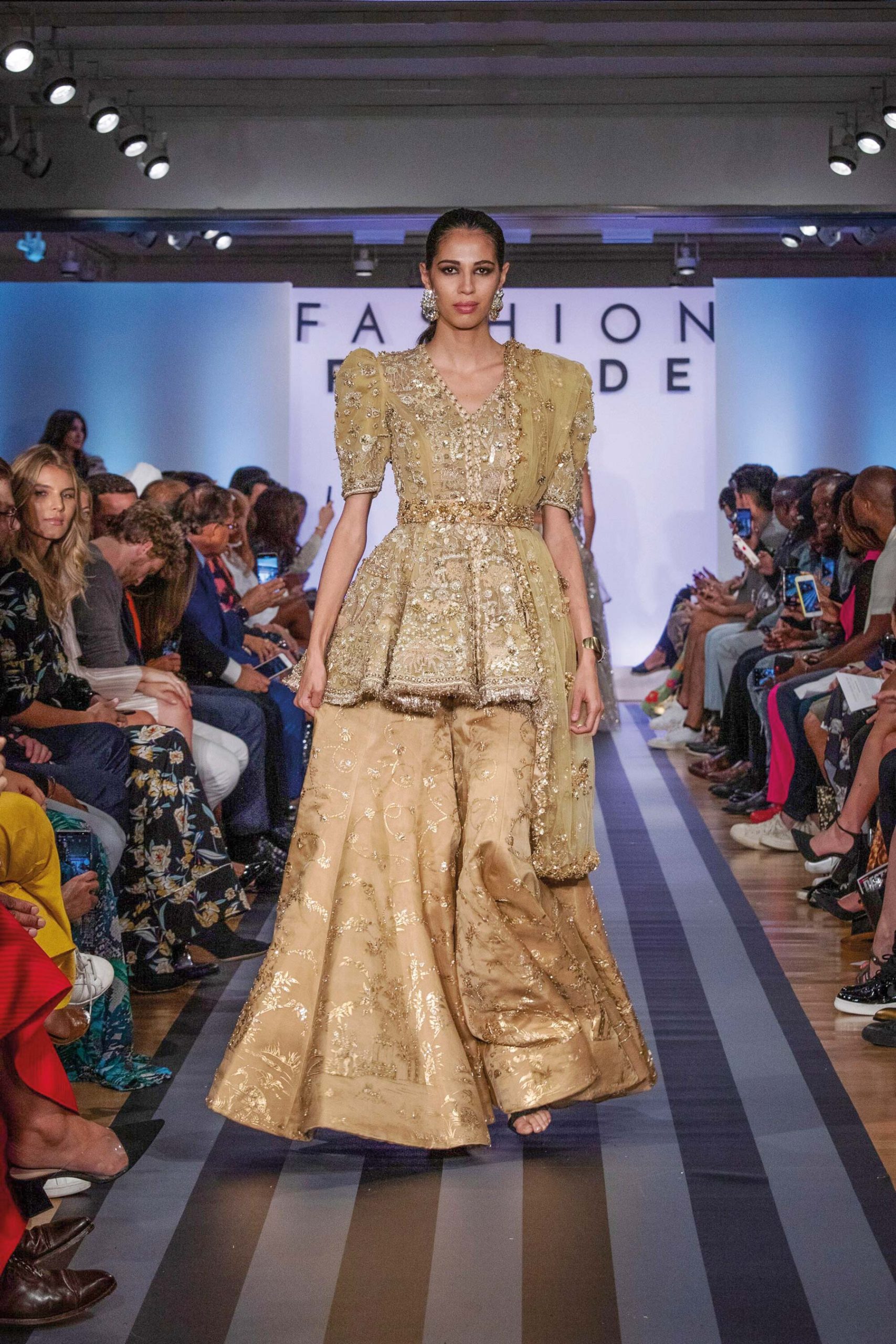
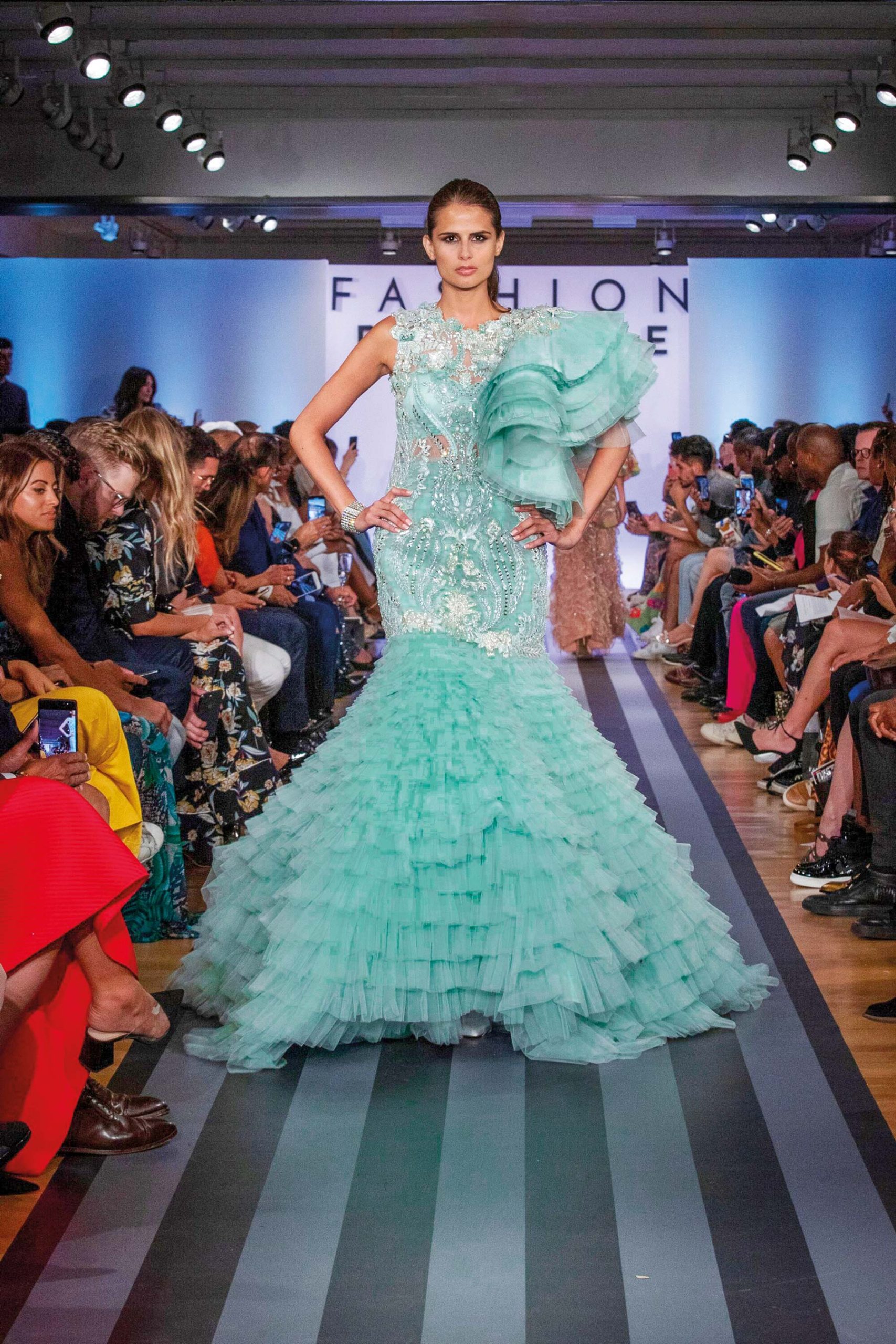

KAMIAR ROKNI
Kamiar Rokni’s finale collection, ‘Conversations,’ was a master class in inclusivity in all its forms. Showcasing a wide variety of South Asian craftsmanship – mirror work, zardozi, phulkari from up North, hand-worked embroidery, shadow work – the collection was a beautiful ode to Pakistani embellishments and bling. He has a particular affinity for patchwork, he says, which is something that is shared across all cultures and is a common element in folk craft across the world. He sought to include visual elements from across cultures in his collection, all showcased on pure fabrics like hand-woven raw silk, jacquard lamé tissue, tissue net, brocade and organza. Rokni, in his own words, relished the opportunity to experiment with fusion between Eastern and Western silhouettes, and created colourful beaded pantsuits and embellished jumpsuits with plunge necklines. The collection was a celebration of what unites fashion globally, and the impact it made on the audience was deep and heartfelt. A black and gold sari-inspired ensemble was a notable hit as it came down the runway. It was a collection that could have walked right off the runway and into the closets of many a fashion forward New Yorker.
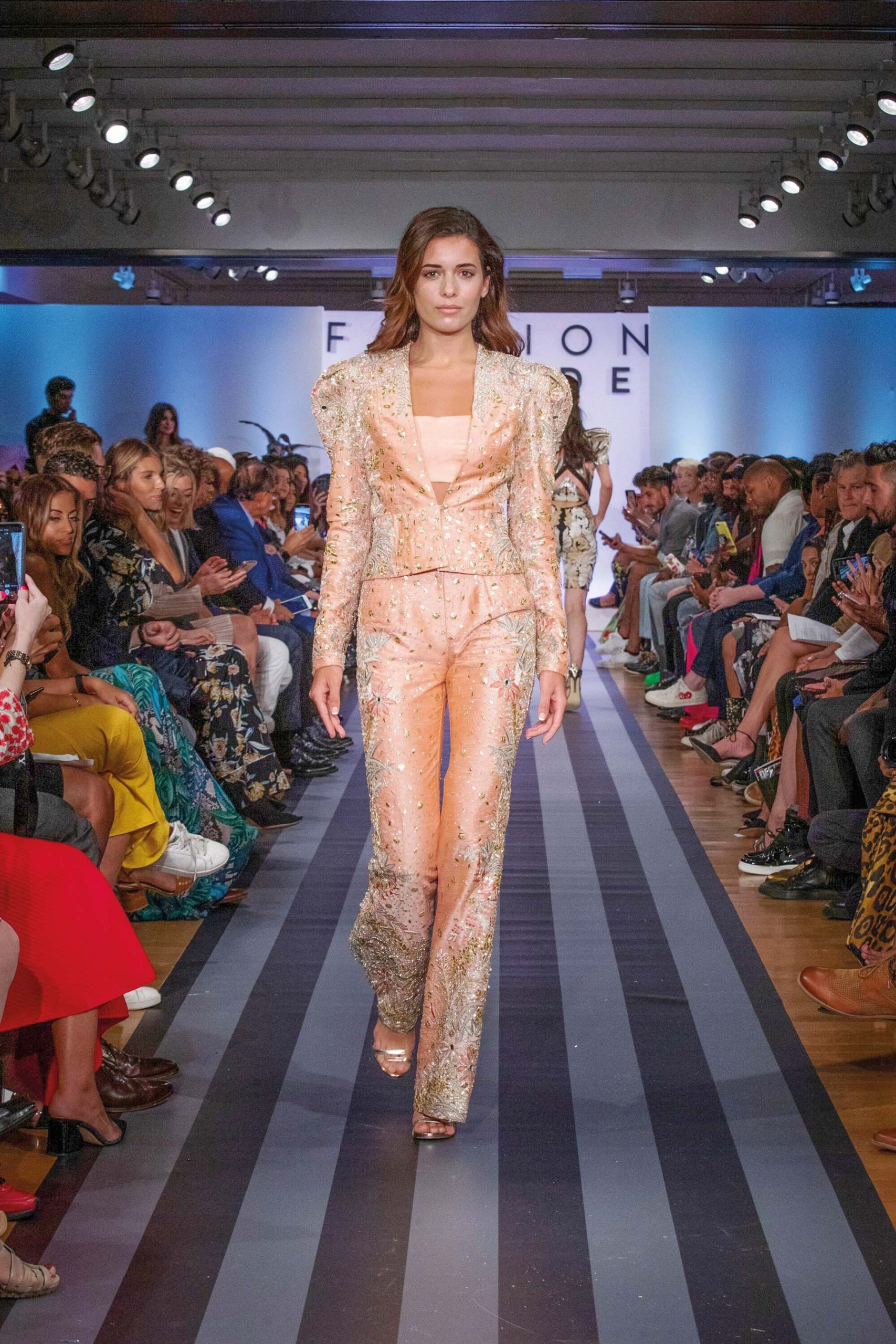
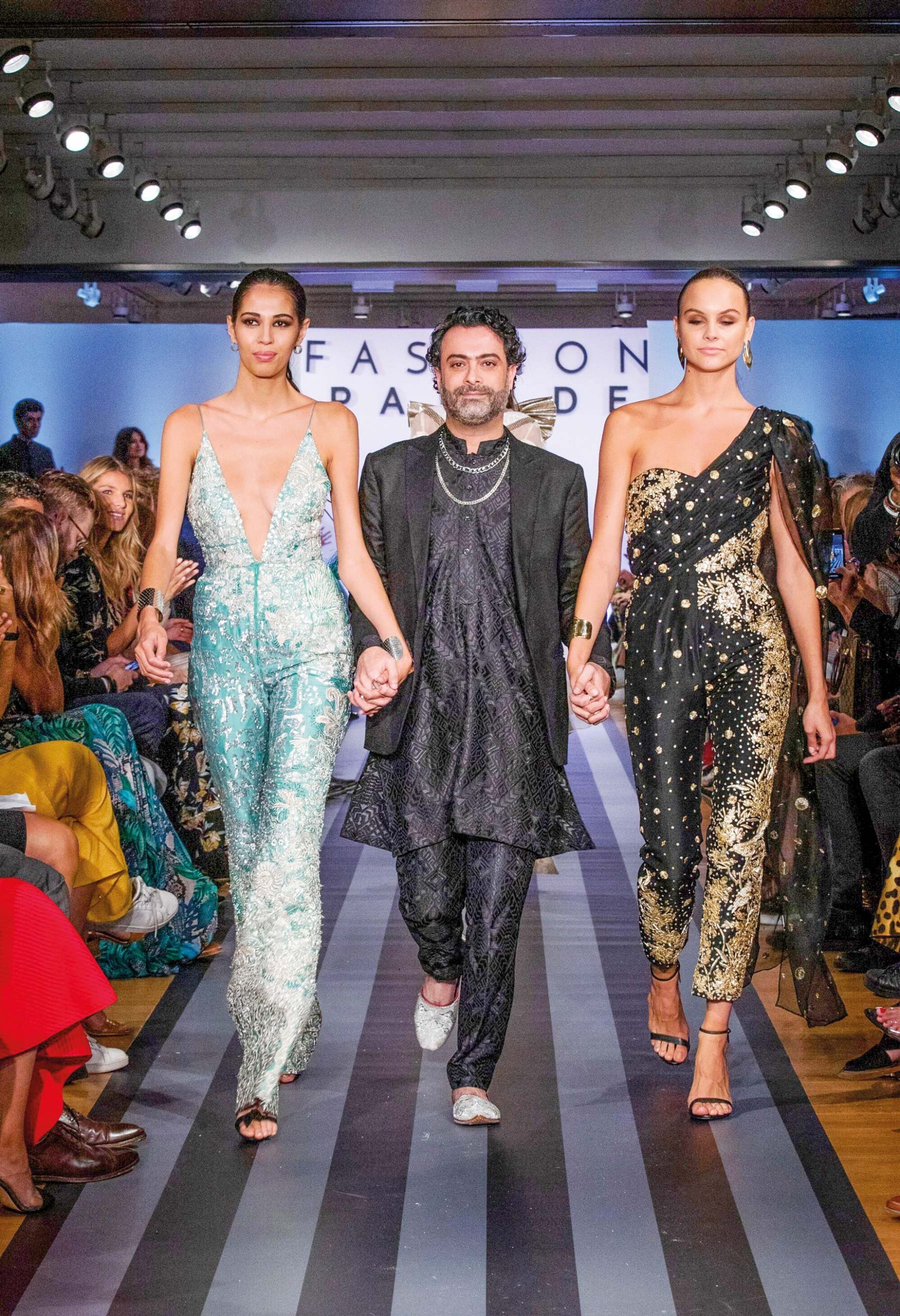
Saadia Siddiqui, the brains behind Fashion Parade, says she created the platform specifically because she is concerned about the future of craft and embroidery. “I fear that the embroidery and craftsmanship of this region will die away with the millennial generation, if we do not preserve it and revive interest in it, it will disappear without the West ever finding out what our craftsman and designers are capable of.” Siddiqui hopes that Fashion Parade can do just that, as well as champion the region the craft comes from and change the perceptions of Pakistan, both as a country and as a player in the global marketplace of fashion and style.



